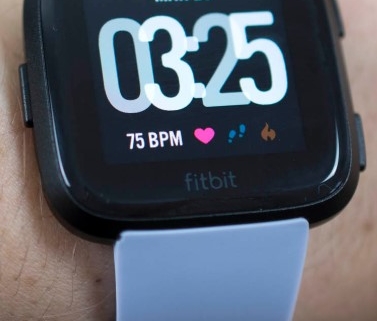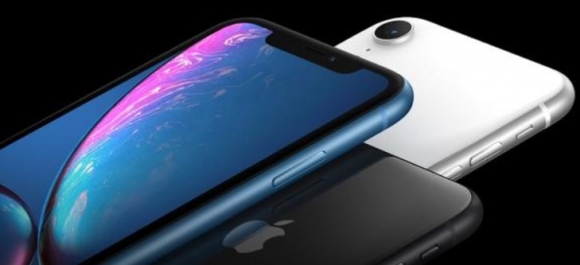Mad Hedge Technology Alerts!
The No. 1 complaint the Mad Hedge Fund Technology Letter receives is that I focus too much on the tech behemoths, and do not allocate much time for the needle-in-the-haystack inspirations aiming to disrupt the status quo.
Let’s get this straight – both are important.
And when a gem of a company riding the coattails of monstrous secular tailwinds comes to the fore, I do not hesitate to usher readers into the stock at a market sweet spot.
Fortunately, many of the lesser-known companies I have recommended have hit their stride such as Salesforce (CRM), Fortinet (FTNT), and Square (SQ), while I alerted readers to avoid Snap (SNAP) like the plague.
There are a lot of moving parts to say the least.
The most recent annual Apple (AAPL) product release event was emblematic of why I cannot go to the well and recommend the minnows of the tech world on a constant basis.
In 2017, Apple registered more than $229 billion in gross revenue. And under this umbrella of assets is a finely tuned operational empire that stretches like the Mongol empire of yore from best-in-class hardware to innovative software services.
Last year brought Apple a king’s ransom of profits to the tune of more than $48 billion.
Many of these upstart firms are fighting tooth and nail to surpass the $100 million gross sales mark, which is peanuts for the intimidating large tech companies.
In the process of expanding their dominion far and wide, the net they cast extends further by the day.
I hammer home the fact that these cash-rich stalwarts have an insatiable drive to initiate new businesses as a way to position themselves at the heart of each groundbreaking trend and capture fresh markets.
Some decisions are rued and some – brilliant.
At the very least, they can afford a few hits.
Algorithms, which suck up voluminous amounts of data, carry out the best decisions that software can buy.
Managers wield these finely tuned algorithms to make precise bets.
These myriads of algorithms are tweaked every day as the level of tech ingenuity snowballs incrementally with each passing day.
Enter Fitbit (FIT).
This company was first known as Healthy Metrics Research, Inc., a decisively less sexy name than its current name Fitbit.
Healthy Metrics Research, Inc. unglamorously began as did most tech companies - with little fanfare.
Its cofounders James Park and Eric Friedman identified the opportunity to jump into the sensor industry, as they saw a monstrous addressable market for future sensors in wearable smart devices.
They soon caught a bid and $400,000 flew into its coffers. They promptly marketed designs to potential investors with nothing more than a circuit board in a wooden box.
Oh, how the wearable smart device market has advanced since those early days…
All in all, the idea was good enough for some initial seed money.
At the first tech conference marketing their new sensors, they were hoping to eclipse 50 orders.
Fortuitously, the upstart firm received more than 2,000 pre-orders, and a reset upward in expectations.
With momentum at their backs, the cofounders now had the sticky situation of physically delivering the end-product to the end-user.
This involved scouring Asia for reasonable suppliers for three-odd months with “7 near death experiences” mixed in the middle of it.
Highlighting the unglamorous nature of incubation stage firms were the cofounders once quick fix sticking a “piece of foam on a circuit board to correct an antenna problem."
Somehow and some way they debuted their product at the tail end of 2009, delivering 5,000 orders with a backlog of additional orders to boot, offering the company some stress relief.
Fitbit had the best product in an industry that barely existed, and everything was rosy at their headquarters in San Francisco.
Best Buy (BBY) even adopted its products, and Fitbit watches were flying off the shelves like hotcakes.
Margins were gloriously high. The lack of threats around the corner made the company the gold standard for smartwatches.
In short, the company was having its cake and eating it, too.
In 2011, Fitbit was furiously adding to the best smartwatch on the market installing an altimeter, a digital clock and a stopwatch to its premium product.
Then came embedded Bluetooth technology: able to track steps, distance, floors climbed, calories burned, and sleep patterns.
After being embroiled in several law quagmires over big data, momentum was still at their back, and Fitbit still managed to go public.
The IPO was a roaring success and then some.
The share price rocketed to almost $50, and the firm sat pretty in the middle of 2015.
Then the company’s shares fell to pieces in one fell swoop.
Fitbit’s stock cratered more than 50% in 2016. To inject new life into the company, CEO James Park trumpeted Fitbit’s imminent face-lift that would transform the young company from a "consumer electronics company" to a "digital healthcare company."
Bad news for Fitbit. Apple planned to do the same exact thing but do it better than Fitbit.
The readjustment to Fitbit’s grand plan was to combat the original Apple smartwatch that debuted on April 24, 2015 – three years ago.
The Apple smartwatch rapidly became the dominant smartwatch in the wearable industry, selling more than 4.2 million units in just one quarter alone.
Fitbit is now trading just a smidgen over $5 today, and the devastation is far from over.
Fitbit’s shares are down almost 1,000% from its 2015 peak, stressing the dangers that minnow tech companies face getting outgunned by companies that have superior talent, unlimited resources, and top-grade management.
Not only that, Apple can integrate any wearable device linking it with the rest of its ecosystem in a heartbeat.
Even better, it does not need to develop an operating system from scratch because it can use what it already has in place - iOS.
Even if it were to run into development troubles, it would be able to throw around a wad of capital to find someone to solve idiosyncratic issues that pop up.
Yes, Tim Cook has not been the second incarnation of Steve Jobs, but he has demonstrated a natural ability to become a trustworthy steward, advancing the interests of the company, its shareholders, and most importantly its lineup of ultra-premium products.
Fitbit was enjoying its beach promenade stroll and walked into a doozy of a tsunami with little warning.
Spearheading a revival is even more daunting.
For David to outdo Goliath takes an emphatic sum of capital and a master plan to go with it.
Fitbit has neither.
The most recent Apple product launch event introduced a gem of a smartwatch, and Fitbit’s shares once again are on life support.
With each passing Apple smartwatch iteration, Fitbit experiences a new dramatic leg down in the share price.
It is almost curtains for this company.
It will be unceremoniously laid to rest in what is now quite an expansive tech graveyard of futility.
The best-case scenario is possibly salvaging itself by drastic reinvention.
It is easier said than done.
Add this company to your list of small companies obliterated by the phenomenon known as FANG, and this story gives credence to investors trying to be cute with their tech investments.
On paper it looks great until the company becomes steamrolled.
And the paper Fitbit was written on doesn’t even look all that hot with Fitbit poised to lose money until 2021.
It sounds cliché, but the network effect cannot be underestimated.
Without this powerful effect, tech investors are exposed to a demonstrably higher level of risk.
The risk of extinction.
Stay away from Fitbit shares and any dead cat bounces that shortly arise.
The Apple watch series 5 could be the dagger that finishes the walking wounded.
As an endnote, the next potential Fitbit creeping closer to the eye of the FANG storm could be the smart speaker company Sonos (SONO).
Sometimes the calm before the storm can be awfully quiet.
Not Good Enough In 2018
________________________________________________________________________________________________
Quote of the Day
“The best way to predict the future is to create it,” said influential philosopher Peter Drucker.
Mad Hedge Technology Letter
September 17, 2018
Fiat Lux
Featured Trade:
(APPLE RAMPS UP ITS GAME),
(AAPL)
A steady hand on the tiller – that was the key takeaway from the recent Apple release event that saw updated iPhone models poised to hit stores in October.
There was nothing of substance to steal the show or radical revelations awing the patient neutral, but that is how Apple CEO Tim Cook likes it.
iPhone XS, iPhone XS Max and iPhone XR were conveniently named after their predecessor the iPhone X.
These smartphones are of the same ilk but in a refreshed way.
The iPhone XR is the lower-grade version of the three, but shares many of the same specs as the superior versions.
This version could be the model that lures in Apple lovers that avoided upgrading last cycle, because the inner workings are similar enough and the look is premium enough, but hundreds of dollars cheaper than the XS and XS Max models.
Check, check, and check.
I wouldn’t label it an “entry level” smartphone, but it hits all the right notes for iPhone fans that can’t cough up the big bucks for the higher-priced products.
The phone’s price tag has been a lingering concern especially in the emerging world.
Apple smartly widened the range of premium phone prices to the lower and higher range - the net effect will be a moderate bump in the all-critical average selling price (ASP), which is a huge winner in all of this.
At the top end of the range, the iPhone XS Max with 512 GB of memory will command a hefty $1,449.
This is the priciest iPhone ever made.
Larger screen sizes in the 6.5" XS Max and 6.1" XR will appeal to their fan base driving additional incremental business to the company that Steve Jobs left his indelible mark on as well.
The covert winner in all of this is Apple’s share price.
Apple’s share price is notorious for being slashed and burned before their new iPhone release events and the run up to earnings season.
The lack of apocalyptic behavior in its recent share price surely has the bulls rejoicing.
Basically, these new iPhone models aren’t worrying Apple investors even one scintilla.
Apple going forward is not betting the ranch on hardware anymore and investors have approved in spades.
Last quarter’s earnings report highlighted the Teflon nature of Apple’s iPhone demand by proving to investors that Apple could successfully sell smartphones over $1,000.
The seminal shift breaking psychological price barriers is indicative of Apple’s relentless pursuit to produce the best phone in the world.
This perpetual chase has seen the company almost surpass the $1,500 price tag this time around and will smash this price point next time around.
The strength in recent Apple price action wholeheartedly signifies that Apple is a software and service company now and not a hardware company.
Apple was able to make the transformation with grace and elegance and avoiding any damaging blowups.
Apple is on pace to double services revenue to $15 billion per quarter by 2020 creating a $60 billion per year revenue beast of a division.
The software and services are where all the high margin activity is migrating in Apple’s ecosystem.
I have incessantly urged readers to stay with the highest quality tech companies that continue to unlock value at a breathtaking pace, especially amid a precarious backdrop of global trade spats and brutal competition.
Investors are migrating up the value chain storing their hard-earned capital in the best of tech as the weak hands are flushed out by the regulation and global trade police.
Apple is one of these companies with a dazzling portfolio of products.
Their steady march upward in quality is confirmed by products such as the Apple Watch Series 4.
Wearables have become a strength of Apple’s product line after botching the initial debut.
The new watch is redesigned, sleek, and mesmerizingly beautiful.
The display is more than 30% larger than its old design and offers flawless software functionality.
Apple’s shift into health is partly driven by monetizing its watch and other wearables.
Apple hopes its watch can be a natural part of sportsmen and sportswomen’s lives.
If Apple’s watch can be your lovable sports companion going forward, then an entire new avenue of revenue can break ground and be redistributed to shareholders.
The Cupertino company packed a ton of heat into this sensational device. It is a big reason why industry insiders believe that half of the 43.5 million smartwatches expected to be sold in 2018 will come from Apple.
Google's Wear OS lags distantly behind with a forecasted 12% market share, and it will be tough going to compete with Apple in this space.
Not only is the watch’s screen bigger, the speakers are also 50% louder.
The larger screen will allow users up to eight shortcuts on the screen for apps.
Apple also noted that the watch’s battery life will last 18 hours with an outdoor workout time of six hours.
Another groundbreaking feature is the ability to take electrocardiograms (ECG) reaffirming Apple’s pivot into the health sector through their shimmering new watch.
According to Apple, this revolutionary feature is the first time an (ECG) product has been available to retail consumers.
To admire the full beauty of this scintillating watch, click here to watch a video.
Earlier this year, Apple CFO Luca Maestri told the Financial Times that wearables in the past year have experienced a “60% growth in revenue terms. Adding up the last four quarters, wearables revenue now exceeds $10 billion.”
Apple’s wearables are classified under “other products” and include AirPods, Watch, Beats, and the HomePod.
Watch this division to continue its robust performance going forward.
In a nod to the emerging markets, Apple decided to introduce its first dual sim card inside the new iPhone models.
One of the slots will be an “eSIM” slot – a nascent technology that hasn’t been widely adopted yet.
For all the newbies unsure of what an eSIM card is - “Electronic SIM card” removes the hassle of poking a paperclip through your sim tray to switch out your sim card, which is a little smaller than your pinkie finger nail.
Rather, eSIM cards only need a compatible network requiring support, and it bypassed the need for a physical sim card and sim card tray altogether.
This move could syphon off even more revenue for phone network carriers if the eSIM technology mushrooms.
Apple will be the gatekeeper of the eSIM tech since it will have total control over it, even opening up the possibility to rotate between more than two carriers in the future if a physical sim card is not needed.
This could pave the way for Apple to get rid of the sim card slot entirely for the next iPhone iteration and use the space to develop something even better.
Technological innovation requires bold moves, to which Apple is no stranger.
In fact, only 10 countries currently support eSIM technology - Austria, Canada, Croatia, the Czech Republic, Germany, Hungary, India, Spain, the UK, and the U.S.
Demonstrating that dual sim cards are a way of life in the emerging world is data showing that 98% of Indian smartphones come with embedded dual sim card functionality, 92% in the Philippines, 90% in China, 77% in Indonesia, and just 4% in the U.S. in the third quarter of 2017 to the second quarter of 2018.
The ease of swapping in and out contract less sim cards is useful for any digital nomad. Buy a sim card for a few dollars at the airport, activate it, and you’re on your merry way.
In another nod to the Chinese customer, Apple will forgo the eSIM technology entirely and stick with the physical dual tray, allowing mainland Apple fans to physically implant two sim cards at one time.
Whether enhancing the phone, recreating its beloved watch, or rolling out audacious new technologies – Apple is satisfying all the naysayers.
It’s no wonder this company is a buy on the dip and hold to eternity stock.
Still Doing What They Do Best
Apple’s Health Pivot Via the Watch
________________________________________________________________________________________________
Quote of the Day
“Price is rarely the most important thing. A cheap product might sell some units. Somebody gets it home and they feel great when they pay the money, but then they get it home and use it and the joy is gone,” said Apple CEO Tim Cook.












